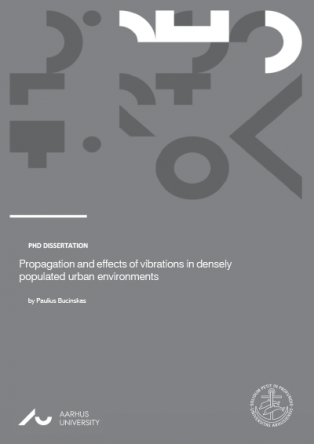Propagation and Effects of Vibrations in Densely Populated Urban Environments
Synopsis
Environmental vibration generated by sources such as rail lines, road traffic and construction work is a serious concern, especially in the urban environment. It leads to annoyance of the exposed population, creating uncomfortable living and working spaces. Thus, prediction and mitigation of these effects is an important research area, investigated by an increasing number of engineers and researchers. In this regard, computational models are especially useful. They enable the prediction of environmental vibration levels in the planning stages of a new project, reducing or, ideally, completely removing the need for in-situ investigations. Currently available numerical approaches are highly capable and can be used to model the complex cases encountered in the urban environment. However, the largest drawback of these approaches is the long computational times needed to obtain the solution, thus limiting their usage for real applications. The thesis aims to create environmental vibration prediction tools, with particular interest in their computational efficiency. This way, the created methodologies could be easier applicable to a wider audience.
Modelling of the vibration propagation through soil, in most cases, is the most time consuming task. Thus, the thesis mostly focuses on this part of the system. A semi-analytical soil modelling approach was chosen to model the soil, using a Thomson-Haskell transfer matrix method. The method is advantageous, due to the analytical formulation of the soil, which does not require the discretization of the full soil domain and incorporates the infinite nature of the soil. The semi-analytical method is coupled to the finite element method, where the soil is accounted for using the semi-analytical approach, while the external structures can be modelled with finite elements. This way, the computational efficiency of the semi-analytical approach is combined with the modelling freedom of the finite elements method, allowing the application of the created model for a wide range of application cases.
The thesis investigates a number of modelling cases that are commonly encountered when analysing dynamic soil–structure interaction and vibration propagation through soil. A railway bridge structure is analysed using lumped-parameter models to obtain a solution in the time domain. The work presents a novel lumped-parameter model fitting technique that is needed to obtain a numerically stable solution. Further, the semi-analytical soil model is used to analyse cases commonly encountered in the urban environment. For that purpose, various configurations of soil interacting with structure are tested, such as: rigid blocks, pile foundations, railway tracks, embedded structures, and cavities inside the soil. The proposed modelling methods are validated by comparison with other numerical methods. Very good agreement is found, demonstrating the high accuracy and the reduced computational effort of the proposed modelling approaches. A novel numerical method for predicting railway-induced vibrations is also proposed. The method utilizes the semi-analytical soil model formulated in both moving and fixed frames of reference. This way, it is possible to model the railway track and the vehicle in a moving frame of reference, while the nearby structures are formulated in a fixed frame of reference. The approach offers a flexible and numerically stable approach of modelling the full vibration propagation path, using a single-step solution procedure.

